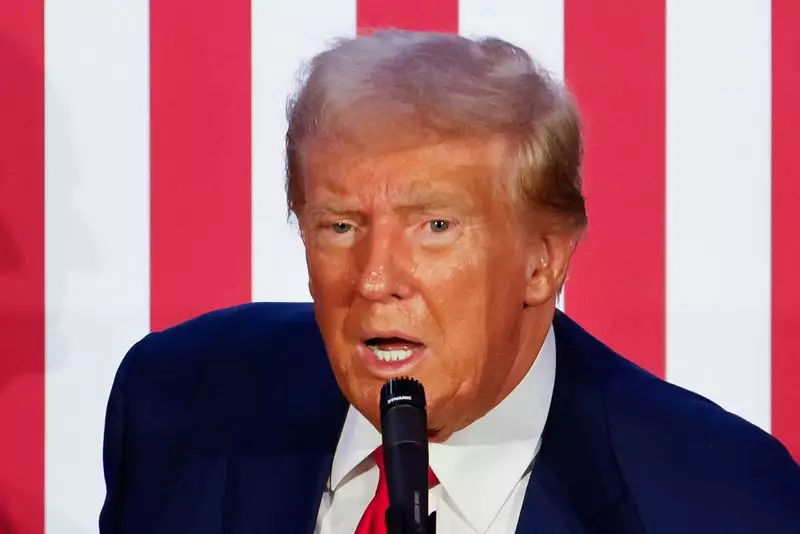The landscape of global trade is always in flux, influenced by policy changes, economic conditions, and the political climate. Recently, Donald Trump, the former president and current Republican presidential candidate, has brought to the forefront a series of aggressive tariff proposals that could dramatically impact corporate earnings, especially among S&P 500 companies, should he secure a second term in office. Analysts from the financial institution Barclays have scrutinized these proposals and arrived at concerning conclusions about their implications for the market and broader economy.
Trump’s proposed tariff reforms are nothing short of sweeping. Analysts indicate a potential universal tariff ranging from 10% to 20% on all foreign imports, alongside an astonishing 60% tax on goods sourced from China. The rationale behind these proposals stems from Trump’s commitment to protect American workers and to challenge what he describes as inequitable practices from foreign trading partners, particularly those with which the United States has a significant trade deficit, such as China and the European Union. Trump’s previous presidency was marked by heightened tensions with China, a situation that resulted in extensive tariffs on Chinese imports. Echoes of this approach resonate in his new proposals as he seeks to rally support among working-class voters who feel adversely affected by globalization.
Barclays analysts have provided a sobering prediction regarding the economic fallout from these tariffs, estimating a 3.2% decline in S&P 500 earnings within the next year. This section emphasizes that the initial impact could appear manageable but is likely to give rise to deeper issues. Should countries retaliate with their own tariffs, the S&P 500 could face an additional 1.5% hit. The implications are not limited to a nominal decrease in profits; the interplay of heightened tariffs and retaliatory measures could create a ripple effect throughout various sectors, particularly those reliant on global supply chains—the materials, discretionary spending, industrials, technology, and healthcare sectors are considered most vulnerable.
The ramifications of these proposed tariffs extend beyond the corporate balance sheets and directly into the economic fabric of the United States. Analysts from Barclays argue that the tariffs could instigate supply constraints that would inevitably drive up prices, leading to increased short-term inflation. Consequently, the Federal Reserve might face a challenging situation. Although the Fed is poised to start easing interest rates from their current 23-year highs, the anticipated inflation could compel the Fed to maintain elevated borrowing costs initially. However, as the market adjusts to a potentially slower growth trajectory amid these trade policy uncertainties, there is speculation that the Fed could undertake more aggressive cuts to stimulate economic activity.
The political backdrop is equally critical in understanding the forthcoming economic environment. A recent presidential debate highlighted the competitiveness of the race between Trump and Democrat Kamala Harris, with current polling indicating a tight contest, particularly in pivotal swing states. Regardless of the outcome, Barclays anticipates a divided Congress at the onset of either Trump or Harris’s administration, suggesting that structural challenges will hinder both candidates’ aggressive policy implementations. Should Trump assume the presidency, he would likely have to resort to executive and regulatory measures to impose his tariff strategy, as significant legislative support may be elusive.
Trump’s proposed tariff measures pose a complex dilemma for the U.S. economy, with the potential for marked shifts in corporate earnings, inflation dynamics, and overall economic growth. Analysts at Barclays illustrate that while the direct effects might seem limited in scope, the broader implications could create a turbulent landscape for businesses and consumers alike. As the political climate continues to shift, stakeholders would do well to prepare for a new era of trade policies that may redefine the contours of American commerce and its global standing. Understanding these dynamics will be crucial for businesses, investors, and policymakers in navigating the uncertain waters ahead.

